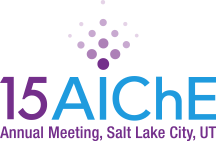

Hydrogen gas has great potential for use in transportation fuels and industrial applications, but as it is currently produced commercially from steam reforming of unrenewable natural gas. An alternative source of hydrogen could be accessed from the reforming of sustainably-grown biomass. Through the use of a photocatalyst, biomass can be decomposed, producing clean-burning fuel. Titanium dioxide (TiO2) is a metal oxide semiconductor of particular interest in photocatalysis due to its activity under ultraviolet illumination and its stability under catalytic reaction conditions. Ordinary TiO2 (anatase, rutile) only absorbs UV wavelengths. Since a much larger fraction of solar irradiation is in the visible range, we aim to modify TiO2-based photocatalyst to interact with visible light. Supporting metal nanoparticles on the surface of TiO2 is known to cause a red shift in the absorbance of TiO2. We have supported copper, nickel, silver, platinum, and palladium on TiO2 through insipient wetness impregnation. The metal-modified TiO2 was tested in two types of in situ reactors; one inside a simple kinetic reactor, and the other in a UV-Visible Spectrophotometer. The samples were then reacted under UV and visible light. Gaseous mixtures of methanol, oxygen and steam were passed over the catalysts while the temperature of the reaction was externally controlled. The products of the reaction were identified by gas chromatography. The addition of each of the metals shifted the absorbance of the TiO2 to longer wavelengths. Future work includes further characterization of the materials, as well as varying the particle size of the metals and the support, and doping the support with hydrogen, carbon, and nitrogen.
